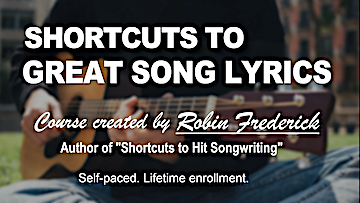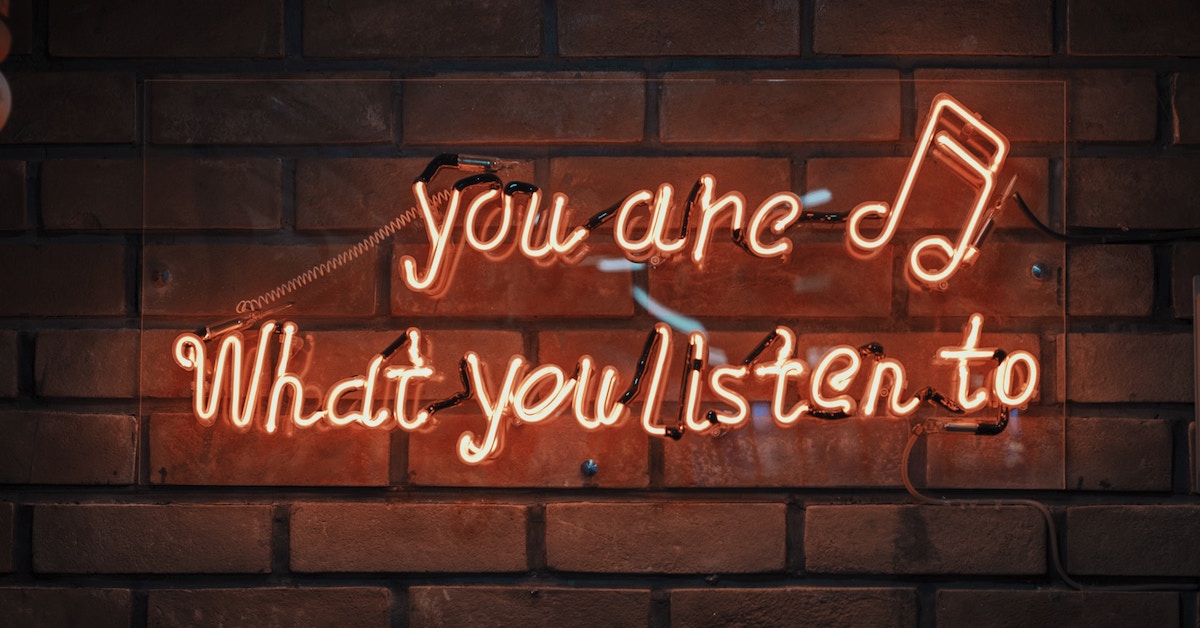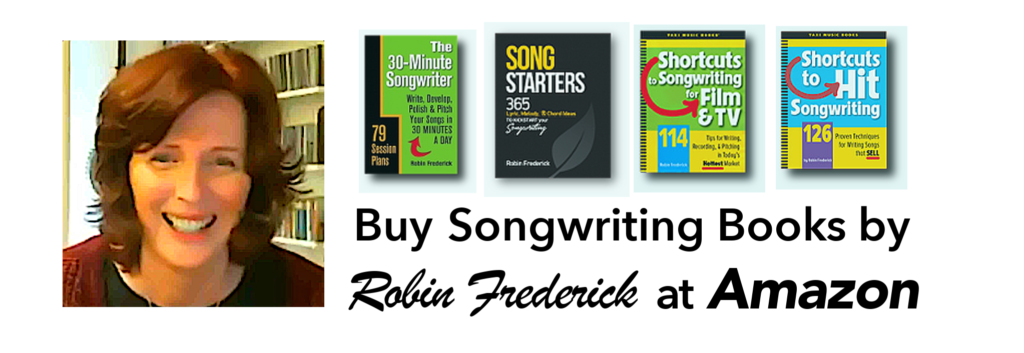Probably every songwriter reading this would answer: WRITE! We all want to spend as much time as we can writing our songs: moving lyrics and melody forward, getting them finished, and starting new ones. Writing feels productive. It feels like you’re accomplishing something.
But listening to songs is just… well, it’s just something you enjoy, something you do when you’re driving, or studying. In other words, something you do while you’re actually doing something else.
But what if I said that listening to songs is as important to your success as writing songs? What if I told you that you should spend as much time listening as you do writing?
Your answer might be…
I don’t like anything that’s popular right now. Why listen to it?
Or… I already know the music I like. I don’t need to listen.
Or… I barely have enough time to write. I want to spend the time I do have on the important stuff.
But listening is important stuff… if you listen like a songwriter.
For the average listener, a song goes by in about three minutes during which it’s either pleasing or annoying. That’s all there is to it.
But listening like a songwriter means listening to a song a dozen times, noticing something new each time, maybe adding the song to a playlist that includes other songs with interesting melody, lyric, or production ideas. That song then becomes a resource that can inspire new ideas or speed up your songwriting process.
HOW TO LISTEN LIKE A SONGWRITER

Find a few songs to listen to. Choose songs you like. While you can apply your songwriter ears to songs you don’t like as well as those you do, I recommend focusing on songs that appeal to you. Whatever song you choose, you’re gonna be listening to it a lot. Might as well make it something you enjoy.
Keep it current. Consider using successful songs released within the last 10 years. The songs can be radio hits or songs used in film and TV. Check out the hit song playlists on Spotify, Apple Music, or Deezer. Look through my Film and TV Songwriting playlist on Spotify. TAXI’s daily opportunities email is a good place to find new songs and artists the music industry is looking for. You can subscribe even if you’re not a TAXI member.
Choose a genre you like. You don’t have to limit yourself to the big hits of the mainstream Pop genre. You can look at acoustic styles like Singer-Songwriter, Indie Folk, Alt Country, or Americana. Or you could try Dream Pop, Alternative R&B, Roots Rock, EDM, or Blues. You’ll find playlists for each of these genres on all the major music streaming services.
– Try It Now –
Start your listening journey. Look through a few genres on your favorite music streaming service. If you’re using YouTube, use a phrase like “Pop genre songs” to search. If you don’t hear any songs you like, switch to another genre. Look for three to four songs you like and write down the titles.
LISTEN FOR MELODY & LYRIC TECHNIQUES
Once you find a song you’re interested in, play it a couple of times as you focus on the lyrics. How is the lyric expressing the emotion or mood of the song? Which words or phrases catch your attention?
Now, listen a couple more times and focus on the melody. How does the melody create contrast between sections? (How do you know when you’re listening to the chorus? Or a verse?) Do you notice changes in note range? Pace? Phrase lengths? Where do you hear melody lines repeating? Where do they change?
You can look up the chords online. Is the same chord progression repeated a lot? Where does it change and how much?
As you listen, think about how you might use some of these techniques in a song of your own. Make a note of that along with the song title and artist. Keep that information where you can find it next time you’re working on a song. Or start a song using some of those techniques right now.
LISTEN FOR PRODUCTION & ARRANGEMENT IDEAS
Look for songs with arrangements that you could get close to in your own studio or with a minimum investment of dollars. I keep a list of songs with barebones arrangements that I can refer to. Listen to the way these songs are mixed. You’ll need to fill space with the vocal and just a few instruments.
Make an “Arrangement Map”: This is one of my favorite production resources. As you listen to a song with an arrangement you like, write down where each instrument enters or drops out. Also note where an instrument changes performance style—from fingerpicking to strum, for example. You’ll find two maps like this in my book Shortcuts to Songwriting for Film and TV on pages 188 and 189.
LISTEN FOR SOLUTIONS TO PROBLEMS

If you find yourself using the same transition from verse to chorus in every song, listen to a couple of successful songs to see how they handle it. Are you wondering how long your chorus should be? While there’s no single answer to that, check out a couple of radio hits or Film & TV songs to see what they did. It might affirm what you’re already doing or suggest a different way to go.
Learning from hit songs can help you become a better songwriter.
LISTENING CAN INSPIRE IDEAS
Listening to other songwriters can help you keep your own ideas fresh. You’re not looking to copy anyone’s song or arrangement. Instead, you’re becoming aware of another songwriter’s thoughts and choices, and you may be inspired to look at things in a different way.
This kind of listening can help you break out of old habits and re-energize your writing with new ideas and sounds. Hearing someone else take a risk in their song can also help you be more brave in your own songwriting.
REALLY LISTEN!
Many of us listen to music while driving. When I go on long car trips I take a flash drive full of songs. If you have Sirius XM, the big range of stations makes it easy to tune into a style you enjoy. But a car is not the place to listen like a songwriter. Save your songwriter ears for those times when you can put all your attention on the song and make notes while you listen.
Set aside at least one hour per week to do nothing but listen like a songwriter. Keep adding new songs to your playlists along with notes on what you notice about them. Then use those ideas to launch a new songwriting session and keep you going all the way to a finished production.


– Try It Now –
Start listening like a songwriter right now! If you don’t have a subscription to Spotify, Apple Music, Deezer, Amazon Music Unlimited, or another streaming service, then use the free version of YouTube. (You’ll just have to deal with the ads).
Follow the directions above for finding 3 to 4 songs. Then listen to them like a songwriter. Create two playlists, one headed LYRICS & MUSIC and another headed PRODUCTION & ARRANGEMENT. Add the new songs to one or both playlists and make a note about what you found interesting or useful.
Now that you’ve done the listening work, you’re ready to start your songwriting work. You’re not going to copy anything from these songs. Instead, use them to launch a lyric concept, melody style, rhythm groove, or arrangement technique you want to try.

